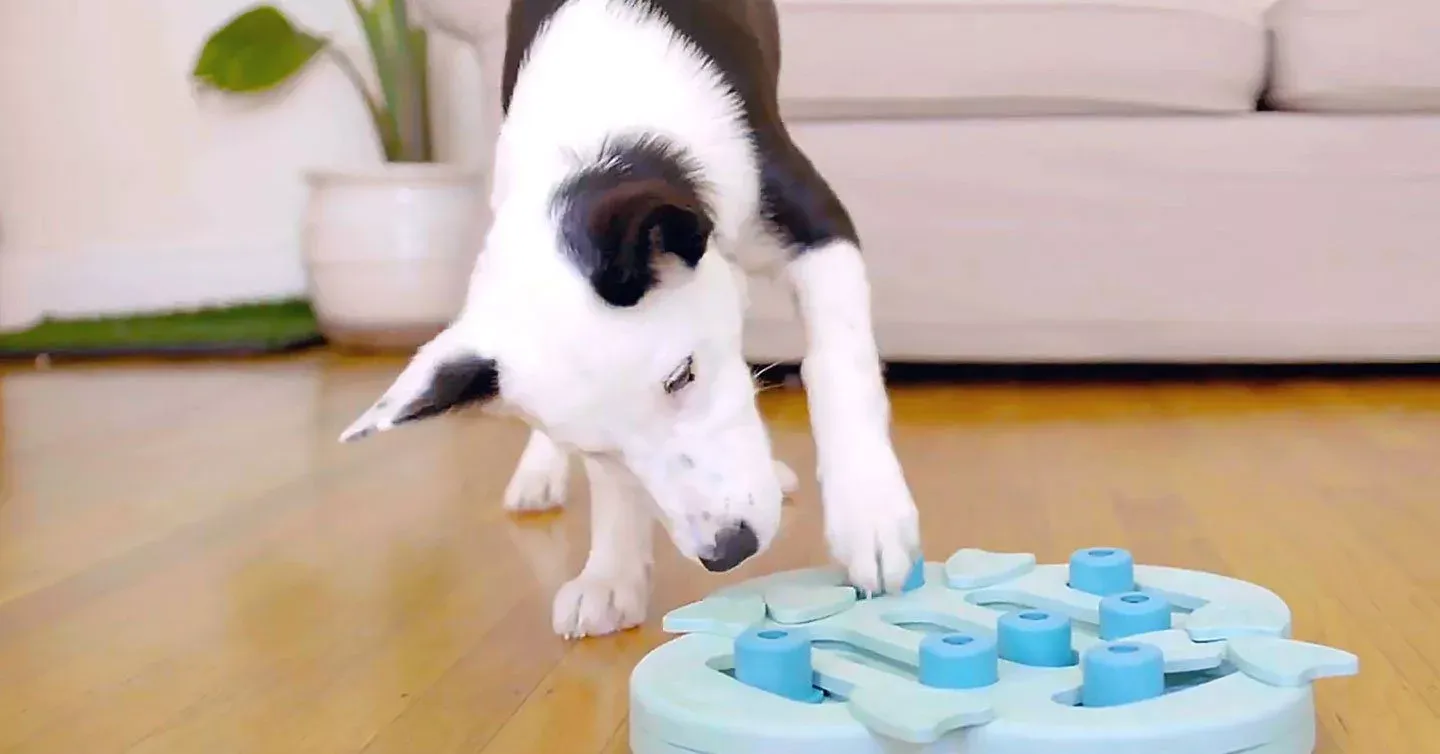Dogs are known for being lively, energetic, and playful animals. They love to run, jump, and play with their owners. However, as much as they enjoy these activities, there are times when they seem to lose interest and become disengaged. This leads to the question, do dogs get bored?

Boredom is a state of mind that occurs when an individual lacks stimulation or is uninterested in their surroundings. While it is a common human emotion, it is not often associated with animals. However, recent studies have shown that dogs can indeed experience boredom. This is especially true for dogs that are left alone for long periods or are not given enough mental or physical stimulation.
Understanding whether dogs can get bored is essential for pet owners. Boredom can lead to destructive behavior, anxiety, and depression in dogs. As such, it is crucial to identify the signs of boredom and take appropriate measures to prevent it. In the following sections, we will explore the causes of boredom in dogs and how to keep them entertained.
Understanding Dog Boredom
Dogs are intelligent and active animals that require mental and physical stimulation to stay healthy and happy. When they don't receive enough stimulation, they can become bored, which can lead to a variety of negative behaviors.

Signs of Boredom in Dogs
Boredom in dogs can manifest itself in a number of ways. Some common signs of boredom include excessive barking, chewing, digging, and destructive behavior. Dogs may also whine or pace when they are bored.
Effects of Boredom on Dog Behavior
When dogs are bored, they may become more prone to engaging in destructive behaviors. They may chew on furniture, dig holes in the yard, or bark excessively. In some cases, boredom can even lead to aggression.
To prevent boredom in dogs, it's important to provide them with plenty of mental and physical stimulation. This can include taking them for walks, playing with them, and providing them with toys and puzzles to keep them occupied.
In conclusion, understanding dog boredom is important for dog owners to prevent negative behaviors in their pets. By providing dogs with enough stimulation, owners can help ensure that their pets remain happy and healthy.
Factors Contributing to Dog Boredom
Dogs, like humans, can experience boredom. There are several factors that can contribute to a dog's boredom, including lack of physical exercise, insufficient mental stimulation, and breed-specific needs.
Lack of Physical Exercise
Dogs require physical exercise to maintain their health and well-being. Without sufficient exercise, dogs can become bored and restless. Breeds such as terriers and herding breeds require more exercise than other breeds, as they have high energy levels and were bred for physical activity. Golden retrievers and Labrador retrievers also require regular exercise to prevent boredom and destructive behavior.

Insufficient Mental Stimulation
In addition to physical exercise, dogs also require mental stimulation. Without mental stimulation, dogs can become bored and develop destructive behavior such as chewing and digging. Mental stimulation can be provided through interactive toys, training exercises, and games. Breeds such as terriers and herding breeds require mental stimulation as they are intelligent and were bred for problem-solving tasks.
Breed-Specific Needs
Different breeds have different needs, including exercise and mental stimulation. It is important to research a breed's specific needs before bringing a dog into a home. For example, herding breeds such as Australian Shepherds require regular exercise and mental stimulation to prevent boredom and destructive behavior. Golden retrievers and Labrador retrievers require regular exercise to prevent boredom and obesity.
In conclusion, there are several factors that can contribute to a dog's boredom. Providing regular physical exercise, mental stimulation, and meeting breed-specific needs can help prevent boredom and destructive behavior in dogs.
Alleviating Boredom Through Activities
Dogs are energetic animals that need regular physical and mental stimulation to stay happy and healthy. To prevent boredom and its associated problems, owners must provide their furry friends with plenty of opportunities to exercise, play, and interact with others. Here are some ways to alleviate boredom through activities:
Interactive Play and Exercise
Interactive play and exercise are great ways to keep dogs engaged and entertained. Playing fetch, tug-of-war, and hide-and-seek are just a few examples of interactive games that can help dogs burn off excess energy and stimulate their minds. Owners can also use toys like puzzle feeders and treat-dispensing balls to keep their dogs mentally stimulated.
Training and Obedience
Training and obedience are not only important for a dog's behavior, but they can also provide mental stimulation and alleviate boredom. Teaching dogs new commands and tricks can be a fun and rewarding experience for both the dog and the owner. Regular training sessions can also help dogs stay focused and mentally stimulated.
Socialization Opportunities
Dogs are social animals that enjoy spending time with other dogs and people. Owners can provide their dogs with socialization opportunities by taking them to dog parks, on walks, and to other places where they can interact with other dogs and people. Socialization can help dogs develop better social skills and reduce boredom and anxiety.
In summary, providing dogs with regular exercise, toys, interaction, training, and socialization opportunities can help alleviate boredom and keep them happy and healthy. Owners should also be aware of their dog's individual needs and preferences and adjust their activities accordingly.
Enrichment Toys and Puzzle Games
Dogs are intelligent and curious creatures that need mental stimulation to stay happy and healthy. Enrichment toys and puzzle games are a great way to provide this stimulation and prevent boredom.

Choosing the Right Toys
When choosing enrichment toys for your dog, it's important to consider their size, age, and personality. Puzzle toys like Kongs are a popular choice because they can be filled with treats and provide hours of entertainment. New toys and dog chew toys can also be great options, but it's important to supervise your dog while they play to ensure they don't accidentally ingest any small pieces.
Benefits of Food Puzzles
Food puzzles are another type of enrichment toy that can provide mental stimulation and promote healthy eating habits. Puzzle feeders can be filled with your dog's regular food or special treats, and require them to work to get the food out. This can help prevent boredom and reduce the risk of overeating.
Overall, enrichment toys and puzzle games are a great way to keep your dog mentally stimulated and prevent boredom. By choosing the right toys and incorporating them into your dog's daily routine, you can help promote a happy and healthy lifestyle for your furry friend.
Creating a Stimulating Environment
Dogs are intelligent animals that require mental stimulation to prevent boredom. A lack of stimulation can lead to destructive behavior, excessive barking, and other undesirable behaviors. To prevent this, owners should create a stimulating environment for their dogs.
Safe Outdoor Spaces
If you have a fenced yard, it can be a great place for your dog to spend time and get exercise. However, it's important to ensure that the space is safe and secure. Make sure that the fence is tall enough and that there are no gaps or holes that your dog can escape through. Additionally, make sure that there are no toxic plants or other hazards in the yard.
If you don't have a fenced yard, consider creating a sandbox or designated play area for your dog. This can be a great way to provide mental and physical stimulation while keeping your dog safe and contained.
Indoor Enrichment Ideas
There are many ways to provide mental stimulation for your dog indoors. One simple way is to provide puzzle toys that require your dog to work for their food or treats. This can help keep your dog mentally engaged and prevent boredom.
Another idea is to create an indoor obstacle course or agility course. This can be a fun way to provide exercise and mental stimulation for your dog. Use items like chairs, boxes, and other household items to create a course that your dog can navigate.
If you have a multi-dog household, it's important to ensure that each dog has their own space and toys. This can help prevent fights and ensure that each dog is getting the mental stimulation they need.
By creating a stimulating environment for your dog, you can help prevent boredom and ensure that your dog is happy and healthy.
Professional Assistance and Resources
When to Consult a Behaviorist
If a dog is exhibiting signs of boredom, it may be time to consult with a professional behaviorist. A behaviorist can help identify the underlying causes of the boredom and recommend appropriate solutions. Common signs of boredom in dogs include excessive barking, destructive behavior, and lethargy.
Behaviorists can also help with more serious behavior issues, such as aggression or anxiety. They can work with the dog and their owner to develop a personalized training plan that uses positive reinforcement techniques to address the behavior.
Finding a Qualified Trainer
A qualified dog trainer can also be a valuable resource in addressing boredom in dogs. When looking for a trainer, it is important to find someone who uses positive reinforcement techniques and has experience working with dogs who are bored or have behavior issues.
Trainers can work with the dog and their owner to develop a training plan that includes mental and physical stimulation to help alleviate boredom. They can also help teach the dog new behaviors and tricks to provide mental stimulation and prevent boredom.
Doggy Daycare and Walkers
For dogs who are left alone for long periods of time, doggy daycare or a dog walker can be a great way to provide socialization and mental stimulation. Doggy daycare provides a safe and supervised environment for dogs to play and interact with other dogs, while a dog walker can provide a change of scenery and a chance to explore new smells and sights.
When choosing a doggy daycare or walker, it is important to find one that is reputable and experienced with dogs. Ask for references and make sure they have liability insurance in case of any accidents.
Overall, there are many resources available to help address boredom in dogs. By working with a qualified behaviorist or trainer and providing mental and physical stimulation, dogs can lead happy and fulfilling lives.

Advanced Dog Activities
For dogs that need more stimulation, there are a variety of advanced activities that can help keep them engaged and happy. Two of the most popular advanced dog activities are dog sports and agility training, and teaching complex tricks.
Dog Sports and Agility Training
Dog sports and agility training are great ways to challenge dogs both physically and mentally. These activities involve setting up obstacle courses that dogs must navigate through quickly and accurately. Dogs that participate in these activities need to be well-trained and have a good understanding of basic obedience commands.
Agility courses can include jumps, tunnels, weave poles, and other obstacles that require dogs to use their bodies in new and challenging ways. Dog sports like Treibball involve herding large balls into a goal, while others like Flyball require dogs to race through a series of hurdles to retrieve a ball and bring it back to their handler.
Teaching Complex Tricks
Teaching complex tricks is another great way to keep dogs mentally stimulated. Dogs that have mastered basic obedience commands can learn more advanced tricks like opening doors, turning off lights, or even fetching specific items by name. Teaching these types of tricks requires patience, persistence, and a good understanding of how dogs learn.
To teach complex tricks, it's important to break them down into smaller steps and reward dogs for each successful attempt. Using positive reinforcement techniques like treats and praise can help encourage dogs to keep learning and trying new things.
Overall, advanced dog activities like dog sports, agility training, and teaching complex tricks can be great ways to keep dogs engaged and happy. By providing dogs with new and challenging experiences, owners can help prevent boredom and keep their furry friends healthy and happy for years to come.
Maintaining Routine and Consistency
Dogs thrive on routine and consistency. Establishing a predictable daily routine can help prevent boredom and problem behaviors. Dogs that know what to expect from their day are less likely to become anxious, destructive, or bored.
Consistency is also essential for training. When a dog is taught a new behavior, it is important to repeat the training exercises consistently until the dog has learned the behavior. This helps the dog to understand what is expected of them and reduces confusion.
A consistent routine also helps to maintain a dog's attention and focus. If a dog knows that it is time for a walk or playtime, they are more likely to be engaged and focused during these activities. This can help to prevent boredom and keep the dog mentally stimulated.
It is important to note that routine and consistency do not mean that a dog's life should be boring or monotonous. It is still important to provide a variety of activities and experiences for a dog to keep them mentally and physically stimulated. However, these activities should be incorporated into a consistent routine to provide structure and predictability for the dog.
Overall, maintaining a consistent routine is an important aspect of preventing boredom and problem behaviors in dogs. By establishing a predictable daily routine, dogs can feel more secure and focused, which can lead to a happier and healthier life.
Conclusion
In conclusion, it is clear that dogs can experience boredom just like humans do. Mental stimulation is as important as physical stimulation for a dog's overall well-being. It is important for dog owners to provide their pets with a variety of activities and toys to keep them engaged and prevent boredom.
Dogs have a keen sense of smell, sight, and hearing, which can be utilized to keep them mentally stimulated. Providing them with interactive toys and puzzles can help engage their senses and keep them entertained.
Physical exercise is also important for a dog's mental health. Regular walks and playtime can help prevent boredom and provide necessary physical stimulation.
Overall, it is important for dog owners to be aware of their pet's needs and provide them with the necessary mental and physical stimulation to prevent boredom. By doing so, they can ensure their dog's overall well-being and happiness.




